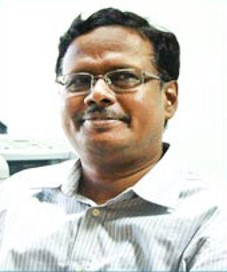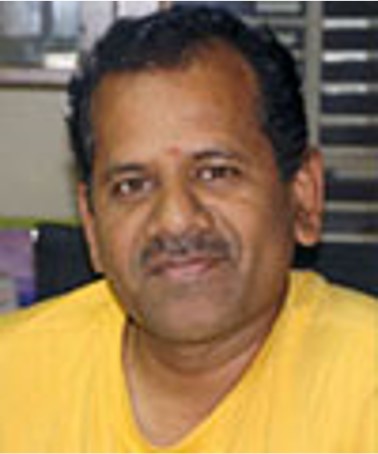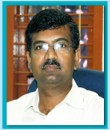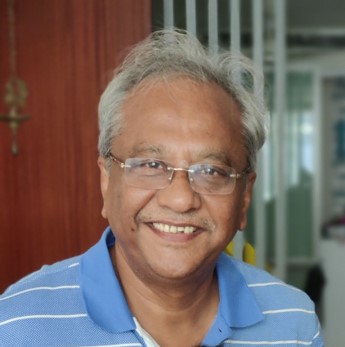Project
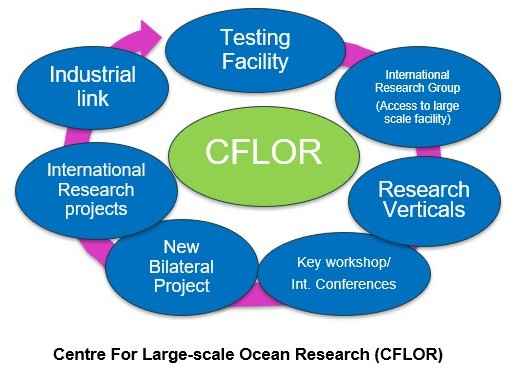

The proposed center will address the following research verticals in alignment with the proposed large scale testing facility-
Research Verticals 1:
Large scale and small-scale studies (a) Existing large-scale study carried out in the GWK will be reproduced at IITM laboratory in small scale. (b) The scale effects emerging during violent impact and breaking waves will be studied.

SBW: H=0.7m T=4 s

BWSAT: H=0.7m T=6 s

BWLAT: H=0.7m T=8 s

SBW:H=0.088 m T=2.5 s

BWSAT: H=0.1 m T=2.5 s

BWLAT: H=0.125 m T=2.5 s
SBW- Slightly Breaking Wave BWSAT- Breaking Wave with Small Air Trap BWLAT- Breaking Wave with Large Air Trap





Research Verticals 2:
Benchmarking different state of the art numerical modelling from the international group for large scale and small-scale results. Incompressible as well as compressible modelling of air in numerical codes to account for aeration.









Research Verticals 3:
The fundamental and applied issues of wave breaking in realistic wave fields, that is, those with continuous spectrum and directional distribution as they occur in the ocean. In particular, physical mechanisms leading to the breaking onset in directional wave fields will be identified, and directional distribution of the breaking probability, breaking severity and white capping dissipation will be quantified and parameterised. The aims will be approached by a comprehensive and most advanced set of conceptual, analytical, numerical, laboratory and field-observation based research tools.
Statistical understanding and definition of the extreme waves:
Extreme wave analysis
- First step in designing a maritime structure is the selection of the design wave.
- Design wave is the extreme wave that is expected to occur over a specified number of years (say 30 or 100).
- The suitable quantification of Extreme wave statistics is critical as majority of coastal structure design is often proportional to square (Hs2), or even cubic (Hs3) of the wave height.
- Estimation of appropriate design value indicate the level of protection and the scale of investment during the construction of structure.


Comparison of 100 year values from different estimation models
-
Estimates from buoy observations are higher compared to the estimates for ERA-interim datasets.
-
Variation of 10-15% is observed on comparing the maximum observed Hs from Buoy data with ERA-interim. This in turn will result in under estimation of return value of ERA interim data.
-
The GEV and GPD methods, shows the 30 year return values smaller than the measured maximum Hs for all the locations mostly by an extent of 10-25%.
-
This is a reasonable shortage of these methods, as far as one cannot forecast extreme smaller return values than ones observed already.
WIND-WAVE MODELLING: IMPROVING PREDICTIVE CAPABILITIES
- Development of model - RESEARCH
- Coupling ocean models –INTEGRATION
- Using Physical measurements: Buoy & Altimeter data – DATA ASSIMILATION



Research Verticals 4:
Development of Air Lubrication Technology to reduce the drag for the slow-moving vessels operating in the deep waters and coastal/inland vessels operating in shallow waters. In order to investigate drag reduction effect due to air bubble injection, experimentation with large scale models in a large scale testing facility is required to adequately satisfy the Reynolds similitude.



Research Verticals 5:
Climate change & morphodynamics have huge applications of data based engineering and inverse modelling. The problems being highly complex, test data from large scale facilities will be crucial towards advancing scientific understanding and knowledge over the years and decades ahead.

Climate Change and Nearshore Morphodynamics
Research Verticals 6:
Research Verticals 6: Survivability of shallow water/shoreline wave energy converter models that are integrated with coastal structures as well as floating offshore wind energy in intermediate waters. Extreme wave modelling and simulating those events both through experiments as well as conventional/hybrid numerical modelling.



Survivability of wave energy converter – Fixed or Floating wave energy devices
Research Verticals 7:
To investigate the design of wave profiles that result in extreme responses in ships and offshore structures using data science applications. Physical model test experiments will be performed to determine a few extreme responses of a vessel in significantly high sea states. The data will be curated and used to develop machine learning architectures to determine shorter wave profiles that can result in a statistically similar extreme response that would otherwise require observation of response for a long time. Physical experiments will also be conducted for verification of the accuracy of the generated wave profiles.

- Extreme Motion of Ships and Offshore Structures
- 3 hour sea state simulation
- Time consuming
- Alternative approach
- Based on Linear Response Theory for specified probability of exceedance
- Cannot account for green waters and nonlinear response
- Artificial Intelligence based approaches




During the initial years, the existing small scale lab facility at department of ocean engineering will be used for research activity.
Final Work package:
Operation of one of the world’s largest testing facility at IITM. The key knowledge gaps that currently exist, which can be bridged using this research facility, are listed above.
Expected deliverables of the research
-
International Research Group
-
In the previous ISOPE 2020, IIT Madras is leading in conducting a comparative study and attracted about 16 papers from 10 different countries, by releasing the experimental data to compare with their state-of-the-art numerical model. Similar study will be carried out for 2022, with large scale and small scale data set.
-
Publication in international conferences/Journals.
-
Hosting International Research students.
-
Two research facility – Intermediate Facility and Large wave flume.
Current status
-Progress of the research/current milestones (infrastructural, technological development, etc., - to be updated on a dynamic basis) – PIs can fill in whatever information they have currently.
- Construction of the intermediate facility – Ongoing.


Survivability of wave energy converter – Fixed or Floating wave energy devices
CFLOR Intermediate Facility:
100m long x 3.35m width x 3m Height. -
Water depth: 2.5m -
Stroke: 4m.
INITIAL POSITION
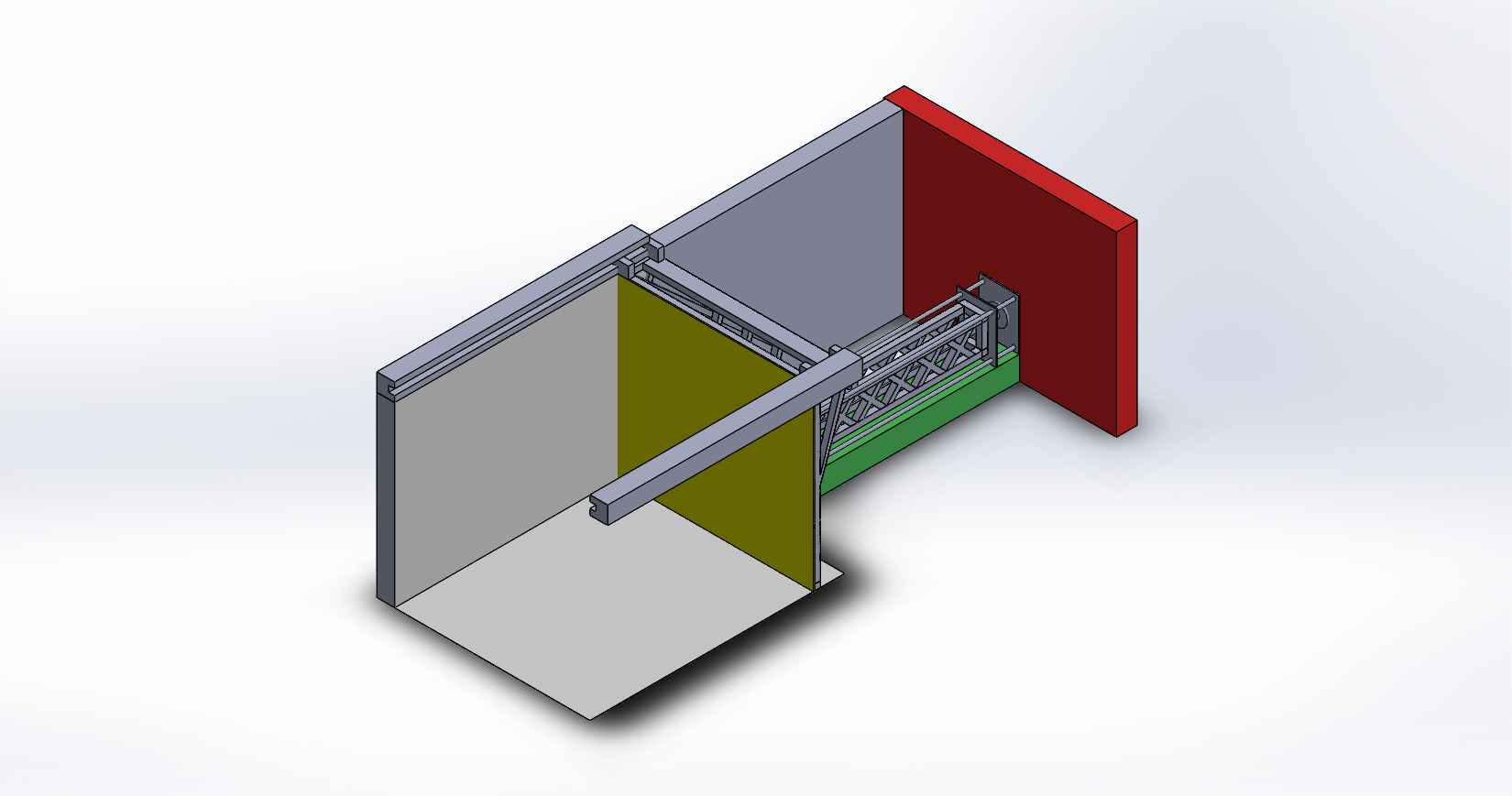
Isometric Front View
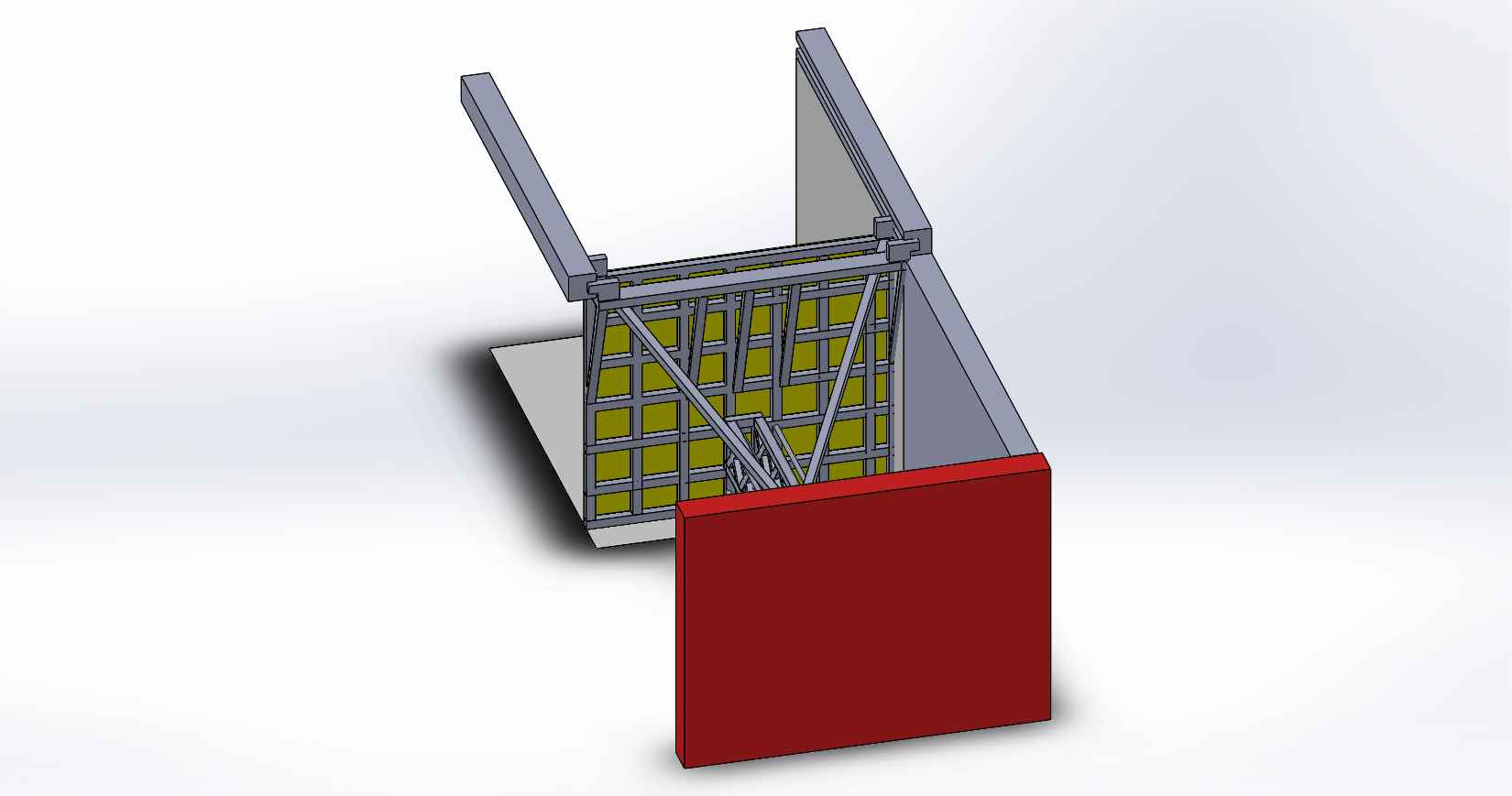
Isometric Back View
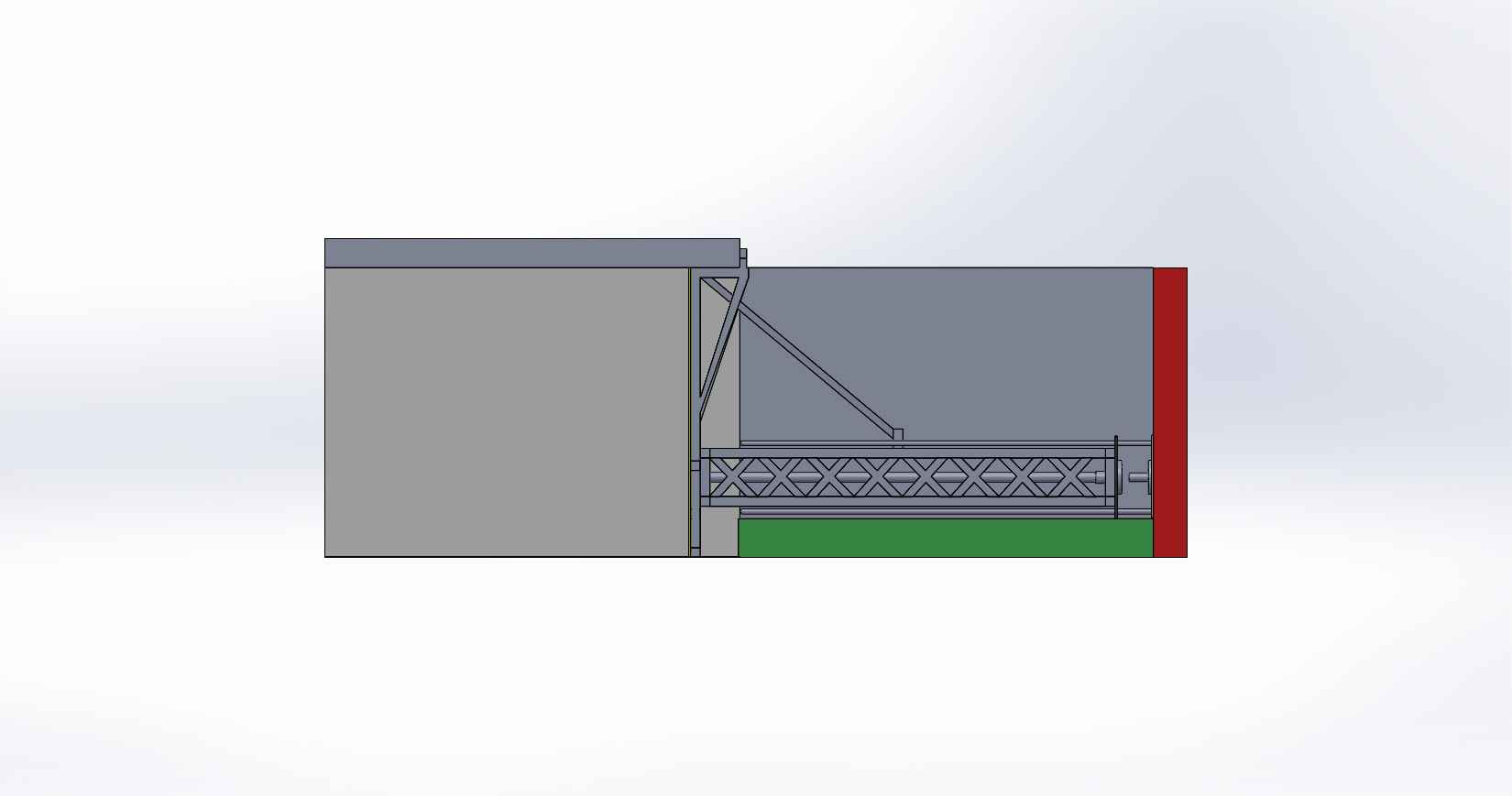
Side View
INITIAL POSITION

Isometric Front View
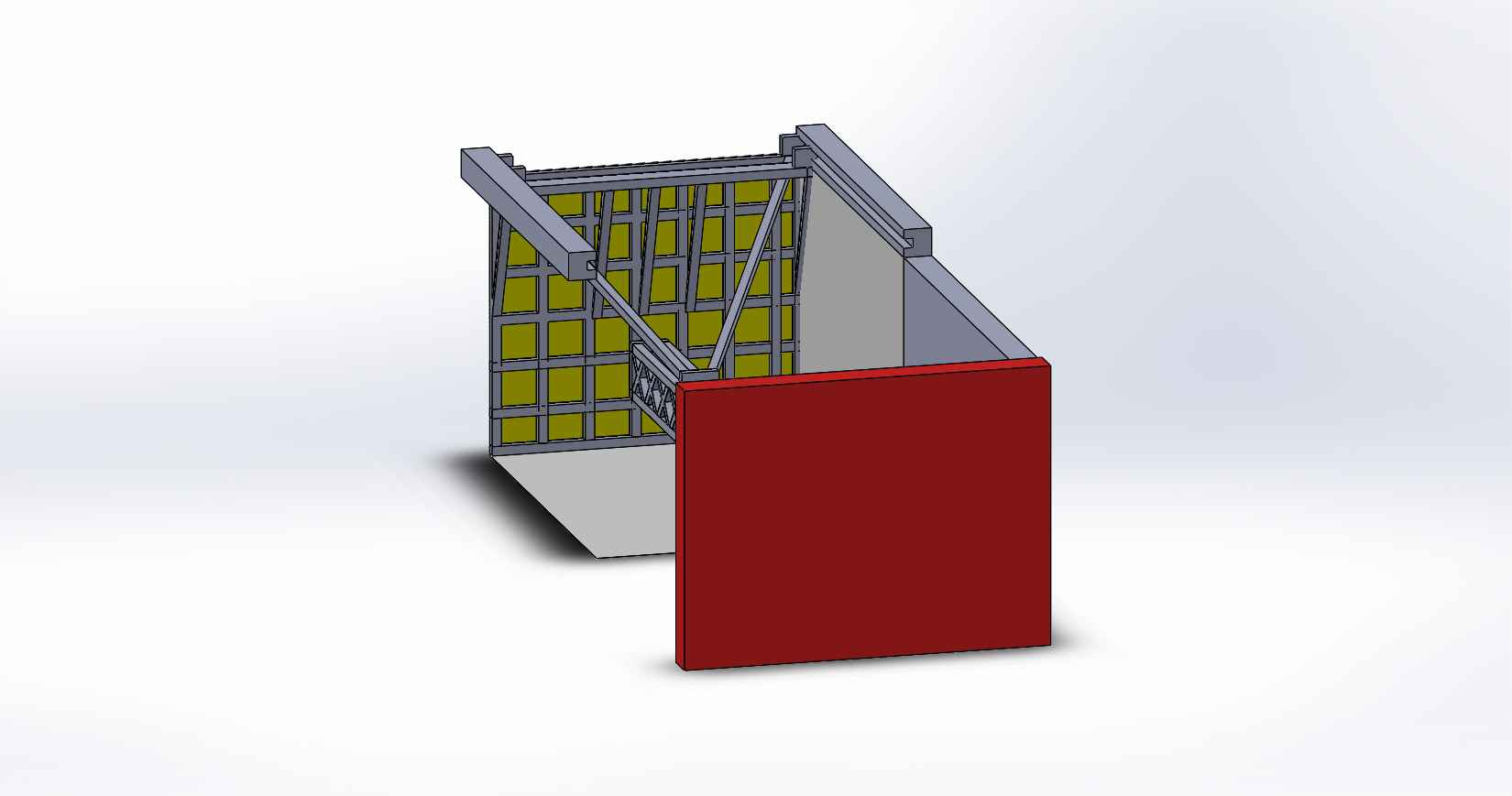
Isometric Back View
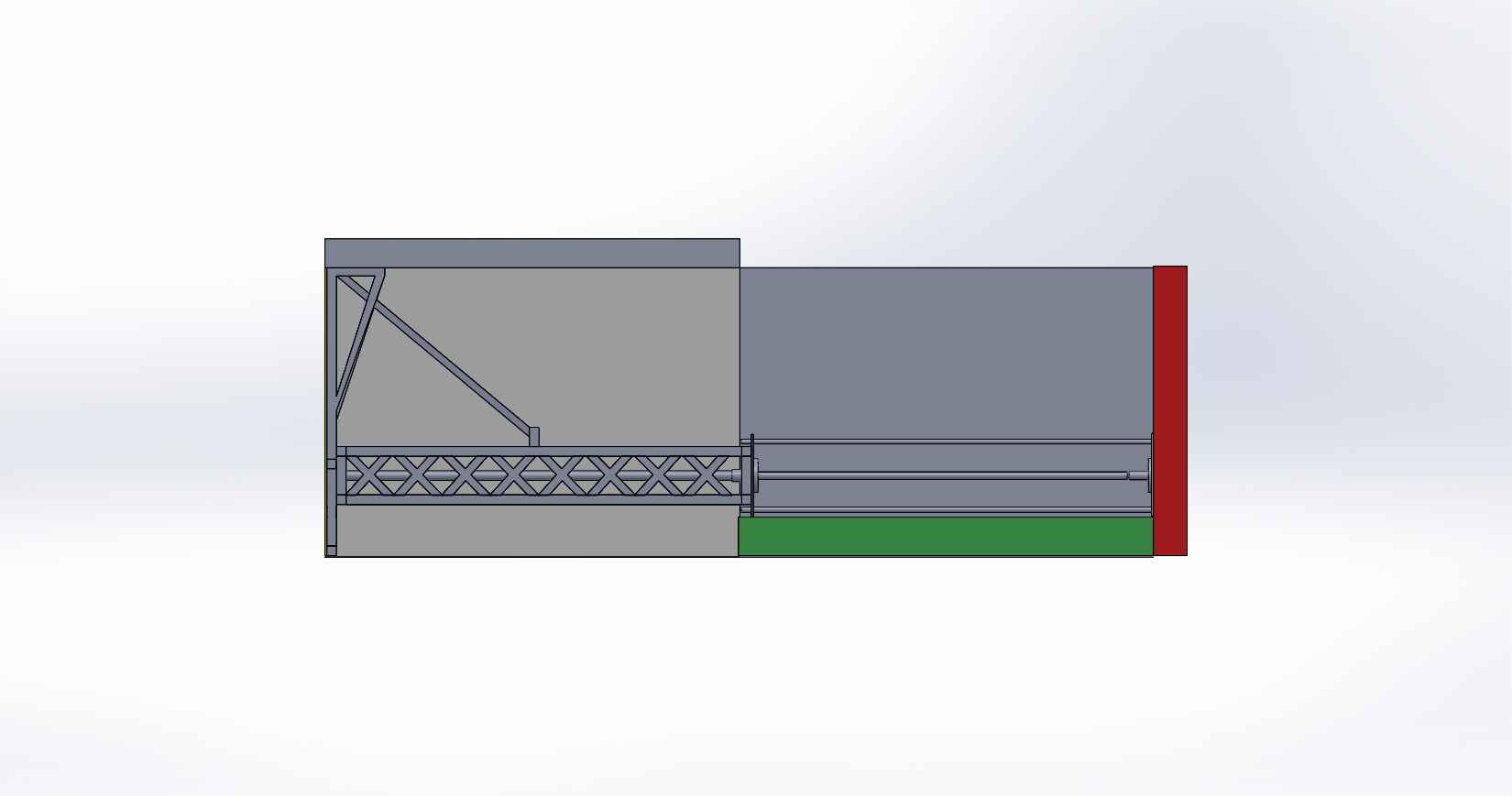
Side View
MAXIMUM STROKE POSITION. 4M STROKE, DRY BACK SYSTEM
Involved in two EPSRC Project sanctioned recently in 2021, which is in alignment with,
Research Verticals 2: link
Research Verticals 6: link
Collaborations
International Collaborations
- Pierre Ferrant [ECN, France] , link
- Thorsten Stoesser [UCL, UK], link
- Qingwei Ma (City, University of London, UK) , link
- Shiqiang Yan (City, University of London, UK), link
- Dominic Reeve [Swansea University, UK], link
- Torsten Schlurmann [Leibniz University of Hannover, Germany] , link
- Abbas Khayyer (Kyoto University, Japan) , link
- Alexander V. Babanin (Univ. Melbourne, Australia) link
- Ira Didenkulova [U. of Oslo, Norway] link
- Ioan Nistor [U. of Ottawa, Canada] link
- Arena Felice [Mediterranea University of Reggio Calabria , Italy]link
- Philip Li-Fan Liu [NUS, Singapore] link
- Lars Erik Holmedal [NTNU, Norway] link
- Paul Koola [Texas A&M University.USA] link
conferences
The third workshop on Wave Structure Interaction will be held during November 2021. link
Collaborating university
- Leibniz University of Hannover, Germany
- ECN, France
- RWTH Aachen, Germany
- NUS, Singapore
- UCL London
- Swansea University, UK
- Kyoto University, Japan
- City, University of London, UK;
- University of Melbourne, Australia;
- Texas A&M, USA;
- University of Oslo, Norway;
- University of Ottawa, Canada;
- NOEL, Italy
- NTNU, Norway.
Societal impact
Testing of coastal structures leads to better coastal protection and better understanding of the social impact. The marine transportation sector plays a major role in maintaining economic and regional balance for India. It plays a vital role in having a great influence on national integration to the world economic market through shipping and cargo movements. New generation ports need larger and deeper structures. Any development in the port sectors will have a significant influence on the neighbourhood. The large scale testing will provide better data that is essentially free from scale effects and hence will have greater reliability. The towing carriage that is planned can be used to study passenger ship movements in the shallow coastal water. Thus, new generation systems and technology can be tested close to the prototype scale.
Sustenance
- The CFLOR testing facility along with NTCPWC basin will be a regionally unique testing facility. Such a consolidation of facilities will have a significant R&D presence at regional and global level. The following opportunities will be available for sustenance.
- Collaborative projects leading to multinational governmental and corporate funding.
- Consultancy from international consultants, ports and offshore, marine renewable energy companies.
- Requirement by several international agencies for conducting testing at our facilities.
- The above opportunities mean continuous influx of funds and projects helping the CFLOR to sustain through revenue generation for testing and replacement of equipment as and when required.
Technical/ Scientific Progress
New work done in the project
- IITM RANS3D, opensource CFD tool to handle large scale wave structure interactions has been released.
- Papers published in Coastal Engineering (with JDP students of RWTH Aachen) on Tsunami -structure interactions.
- Joint DFG project with RWTH Aachen has been sanctioned “BUFFER BLOCKS AS WAVE ENERGY DISSIPATORS (BB-WEnDis)” PI: Holger Schuettrumpf, V. Sundar and V. Sriram. MoU agreement has been signed with ICSR.
Infrastructure developments
Intermediate facility PO for wavemaker fabrication and hydraulics were released.
Output
- A comparative study session for large and small scale has been announced as part of the project in ISOPE 2022 conference. The special session will be conducted. https://home.iitm.ac.in/vsriram/wp-content/uploads/2021/09/ISOPE2022-Comparitive_final.pdf
- Papers accepted in IEEE oceans, HYDRO 2021 conference (Best paper award).
- Webinars and workshops are planned.
Mobility
Visits planned for PI, co-PIs, international collaborators and students (both inbound and outbound)
- Shagun Agarwal (IITM Student) to City, UoL. Waiting for UK visa pending with embassy.
- JDP student identified with Univ. of Melborne. The student is a Mexican who will join Uni. Melbourne by Mar.‘22 and the visit will be planned.
- JDP student will be identified with RWTH Aachen (recently, we have received joint project funded by DFG). Call for phd will be announced.
- JDP with ECN. Call for joint phd will be announced with ECN again to identify the student to register at ECN (previous student declined due to personal issue) and travel to India.
- VAJRA Faculty - Prof. Liu will plan his travel later this year depends upon the situations.
Relationship
Industrial Engagement
Discussion with different ports and mobilising funds for Rs 10 crore for the large flume wavemaker. Discussion with NIOT, Lakshadeep administration & L&T, Port of Antwerp for joint benchmark projects.
University Engagement
- CFLOR is project partner in EPSRC research project. The experiments will be carried out at IITMadras.
- CFLOR is project partner in EPSRC research project.
- Joint DFG project with RWTH Aachen sanctioned.
- Sponsorsed equipments for the ‘offshore renewable energy’ experiments from Cardiff University.
- Planning for collaborative initiative with NTNU for INTPART project proposal.
Updates
Relevant Updates
Guest editor for the SI: Hybrid modelling in WSI (one of the verticals in proposed project) in Ocean Engineering, Elsevier.


